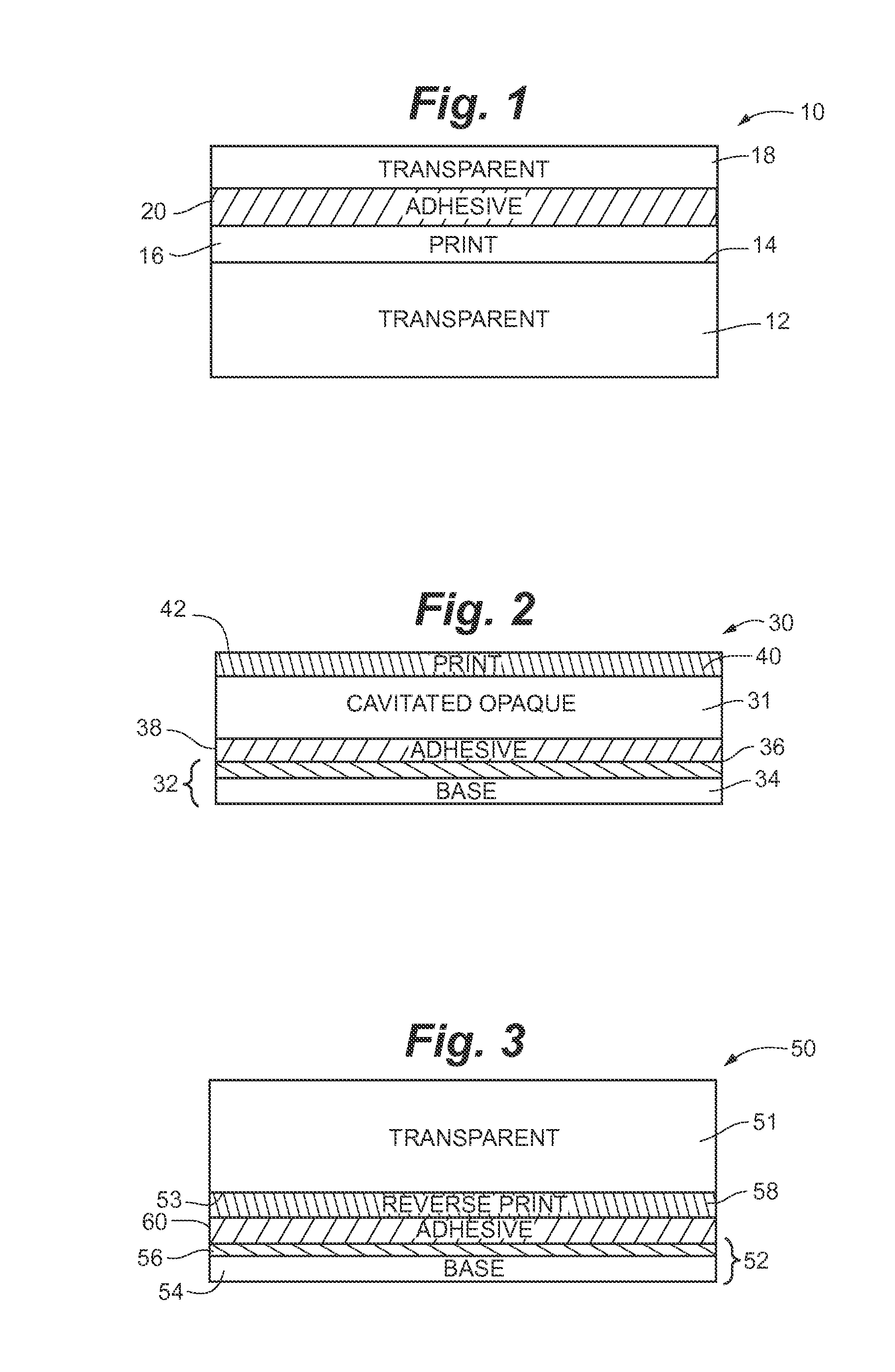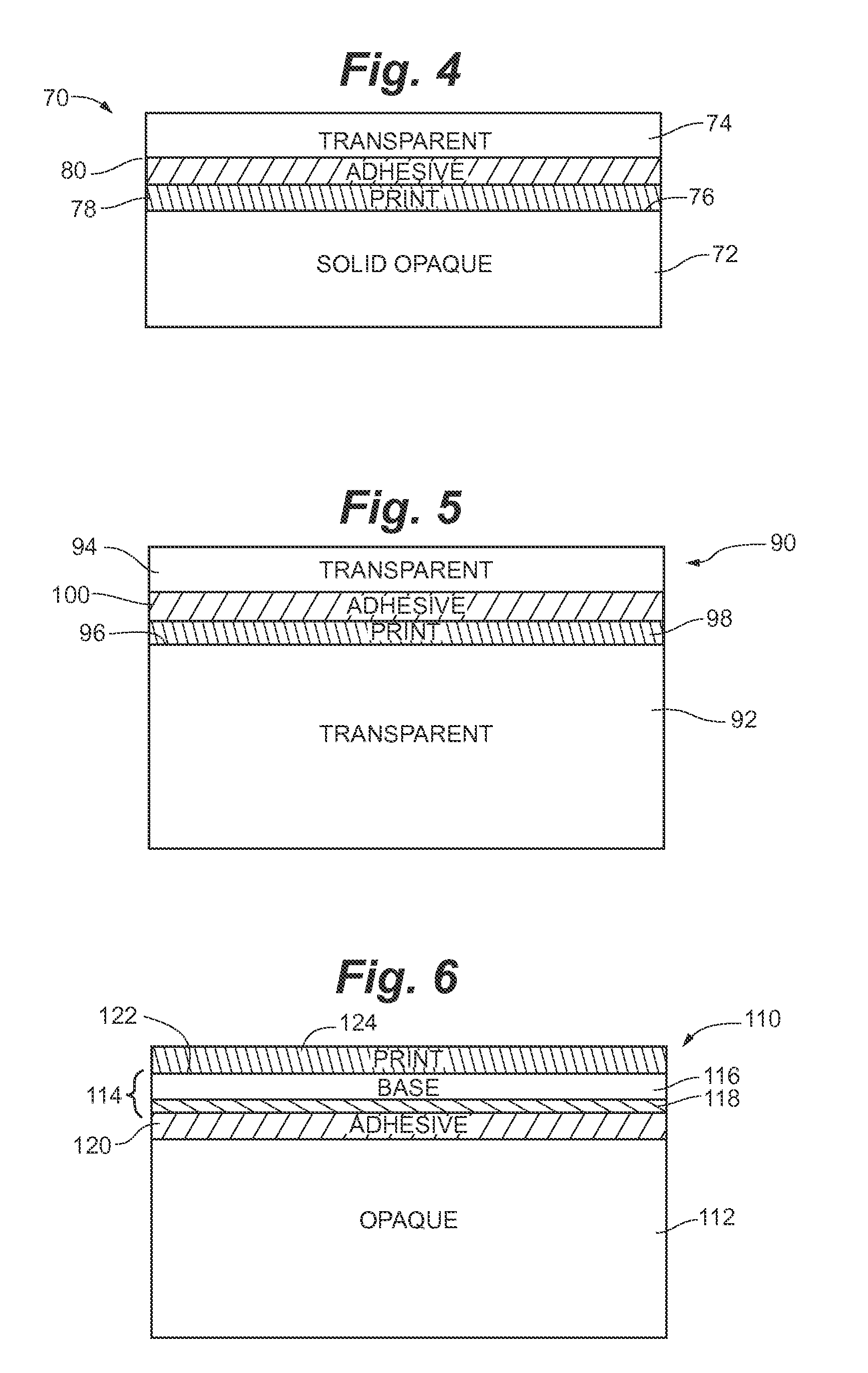Composite film having barrier properties for use as in-mold labels, article with in-mold labels, and methods of making same
a technology of barrier properties and composite films, applied in the field of in-mold label technology, can solve the problems of insufficient translation of films used in pouching industries into in-mold labeling industries, thin solid films cannot seal to themselves in injection-molded processes, and the application of existing in-mold technologies is limited
- Summary
- Abstract
- Description
- Claims
- Application Information
AI Technical Summary
Benefits of technology
Problems solved by technology
Method used
Image
Examples
Embodiment Construction
[0122]Embodiments are further depicted and described in the following examples. A number of composite films were constructed, and some of which are molded into containers using standard injection molding techniques.
Sample 1:
[0123]Sample 1 film is a composite film including a cavitated opaque film comprising highly voided oriented polypropylene (OPP), and having a gauge of 50 microns, having a print layer on an outer surface, and laminated, via laminating adhesive, to a barrier layer made up of an opaque biaxially oriented polypropylene layer metalized on one side. The metalized layer is adjacent the adhesive layer such that it is buried within the composite film. The non-metalized side of the polypropylene film is the bonding side for molding applications. The Sample 1 film is sealable onto itself such that an overlap seam is possible.
Sample 2:
[0124]Sample 2 is similar to the opaque / metallic barrier layer construction of Sample 1, and is sealable onto itself such that n overlap seam...
PUM
| Property | Measurement | Unit |
|---|---|---|
| thickness | aaaaa | aaaaa |
| thickness | aaaaa | aaaaa |
| thickness | aaaaa | aaaaa |
Abstract
Description
Claims
Application Information
 Login to View More
Login to View More - R&D
- Intellectual Property
- Life Sciences
- Materials
- Tech Scout
- Unparalleled Data Quality
- Higher Quality Content
- 60% Fewer Hallucinations
Browse by: Latest US Patents, China's latest patents, Technical Efficacy Thesaurus, Application Domain, Technology Topic, Popular Technical Reports.
© 2025 PatSnap. All rights reserved.Legal|Privacy policy|Modern Slavery Act Transparency Statement|Sitemap|About US| Contact US: help@patsnap.com



